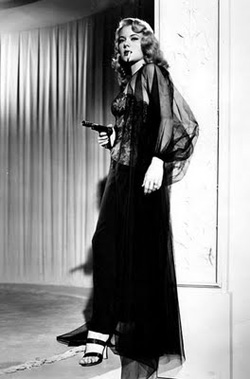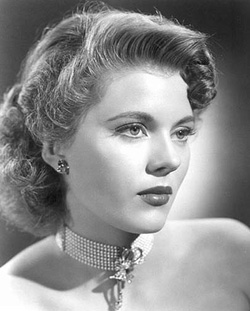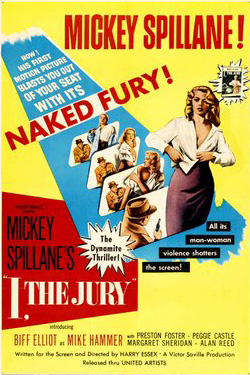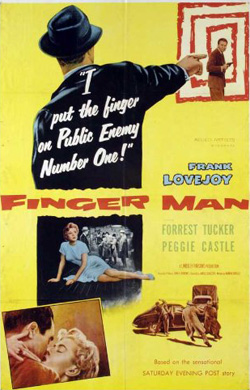
It would be a shame to lose these films, if for no other reason than they are the final fading evidence of so many talented people. While big stars like Barbara Stanwyck or Ava Gardner are in no danger of disappearing, the further one digs into the cycle of classic noir films the more one finds forgotten women of great talent and vivacity who, with just one breakout role, could have shot to eternal stardom. One finds men there too, of course, but Hollywood has always been an especially dangerous place for beautiful young women drunk on dreams of wealth and fame. Film noir is, at least in part, a cult of these discarded women. It is their final testament.

Her best film was Phil Karlson’s 99 River Street (1955) in which she plays John Payne’s faithless wife. Her plan to leave her husband for a jewel thief sets off a chain reaction of bad events, events that ultimately consume Castle herself. Castle’s performance is evocative of her screen persona—sexy, more than a bit dangerous, but also tinged with disappointment. She takes a role that could have been one-dimensional and injects it with real personality. She’s the bad girl in the film, but you come away from it with sympathy for her.
Part of her ability to draw the audience in was good acting, but some of it came from Castle’s own essential nature. As her friend, Donna Martell, would later remember, “There was something missing in the girl’s personality. She was very lonely, and she was not a happy person. I felt that right away.” Something of what Martell saw came through onscreen, though it was seldom put to good use by directors who preferred to accentuate Castle’s voluptuousness and air of self-sufficiency.

Her second Spillane adaptation, The Long Wait (1954), was a step down from the first in overall quality, but it does demonstrate what charisma Castle possessed. She was an effortlessly sexy and interesting actress, and every time she shows up on screen, this rather plodding movie perks up a bit. She also features in the film’s strangest, and best, scene—an almost impressionistic little number in which Castle and Anthony Quinn are kidnapped by a gangster and taken to an abandoned warehouse. In the middle of a huge circle of white light, bordered by complete darkness, Quinn is tied to a chair and Castle is bound-up on the floor. In a montage of askew camera angles that stands out stylistically from the rest of the film, Castle crawls over to Quinn as the psycho gangster throws obstacles like tables and chairs in her path. The scene was clearly designed as the big Hitchcockian set-piece of the film, but while it fails to generate much real suspense, it is an interesting piece of filmmaking on its own. If nothing else, it’s probably the one scene from the film that you’ll remember.

If you know Castle’s story, then one scene in the film takes on a particular resonance. She has a brief monologue in which she explains her life to Lovejoy. Castle delivers it beautifully in one take, her eyes looking close to genuine tears:
“All my life, I’ve had dreams—not big ones, just my share of the little things…I know I’m no bargain. I’ve been around, plenty. I don’t feel sorry for myself. Only, sometimes, I get the feeling there isn’t any more time, like there isn’t going to be any tomorrow. Be nice to me. Please.”
Jake Hinkson, The Night Editor

PS: Castle’s best film, 99 River Street is available for streaming on Netflix’s Watch Instantly. Also available, Castle as a gun-toting cowgirl seeking revenge in Two-Gun Lady (co-starring Marie Windsor).